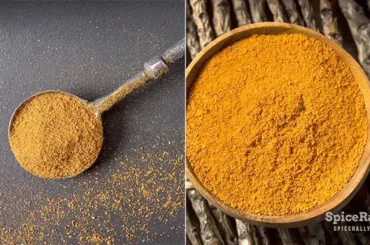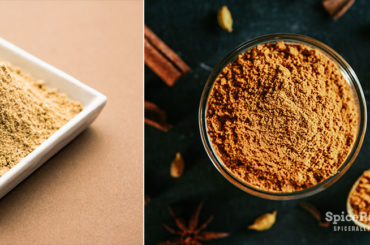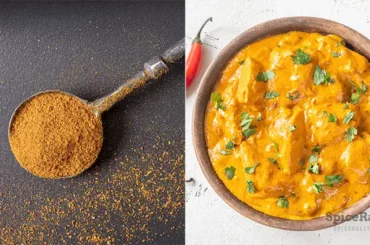Ah, pumpkin spice–no, not a member of the Spice Girls, but a popular blend that is popular during the fall and winter seasons. When there’s that autumn crisp, and the temperature slowly goes down, suddenly everyone is feeling pumpkins.
Pumpkin spice-flavored things are seen in every establishment, whether drinks or dessert. Pumpkin spice latte, pumpkin spice pie, even pumpkin pie pasta!
This is a blend that’s much more complex than you think. The most common ingredients used to make pumpkin spice are:
These are the core building blocks that perfectly encapsulate the flavor and essence of fall.
Some would describe this specific flavor as a nostalgic feeling that reminds them of sitting by the fireplace, all warm and cozy. Who’s to say you can’t have pumpkin spice-flavored things during any time of the year?
To learn more about pumpkin spice down to the tee, then continue reading this ultimate guide, and you’ll be pumpkin spice experts in no time!
What Spices are in Pumpkin Spice? The Ultimate Guide.
Technically, this spice blend hasn’t been around forever, it was said to originate back in the 1950s, and the love for it has been growing ever since. Pumpkin spice was invented as a complementary flavor for pumpkin pies.
Although this spice has been closely associated with Thanksgiving, the history of pumpkin spice states that this spice wasn’t initially introduced during Thanksgiving.

As stated earlier, the typical spices included in the pumpkin spice are ground cinnamon, ground nutmeg, ground ginger, ground allspice, and ground cloves.
The combination of these spices creates an exquisite and unique taste of earthiness that’s equally balanced with a spicy-sweet aroma that has made it the poster child of the fall season.
Here is a comprehensive list of pumpkin spice ingredients, from their flavor profile to possible health benefits.
01- Ground Cinnamon
Cinnamon usually can be found in stick form or ground form. When it comes to pumpkin spice, ground cinnamon is the one that’s added to the mixture. Cinnamon contains a strong aroma and taste, and it gives off a sweet and woody flavor that may not be everyone’s cup of tea. Ground cinnamon is the main event of the pumpkin spice blend.
Cinnamon is known to have many antioxidants that provide many health benefits. The spice is beneficial for people with diabetes, controlling blood sugar levels, and it also helps maintain cholesterol levels. Cinnamon can also reduce the risk of cardiovascular diseases and cancer.
02- Ground Nutmeg
Nutmeg is known for its slightly sweet, warm, and nutty flavor, and it’s another perfect fall flavoring. Ground nutmeg also releases an aromatic scent that’s spicy and woody. The spice is highly similar to ground cinnamon but with a slight difference.
Interestingly enough, nutmeg contains a poisonous narcotic named myristicin, responsible for its distinct aroma and flavor. Large doses of nutmeg can lead to vomiting, hallucinations, seizures, and even death. Adding a small amount to add flavor to a dish is perfectly safe, so remember not to put a lot of it!
Despite that, consuming nutmeg can help reduce flatulence, improve digestion, relieve nausea, and increase appetite.
03- Ground Ginger
Pumpkin spice calls for ground ginger, which produces a light, peppery, lemony aroma accompanied with a hot, spicy, sweet flavoring. Ground ginger gives the pumpkin spice a bright and zinginess kick of flavor.
Ginger itself is known for many health benefits because it contains gingerol, a potent medicinal properties component. That being said, it can help with digestive problems, relieve nausea, and aid in weight loss.
It is said to aid with osteoarthritis and may potentially lower blood sugar levels and improve heart disease risk factors. Ginger has also been linked with reducing menstrual pain. Overall, ginger is a powerful medicinal spice.
While pumpkin spice calls for ground ginger, it could also be a part of ramen seasoning. To explore more about what is in ramen seasoning, click here.
04- Ground Allspice
What exactly is ground allspice? Don’t let its name trick you. Allspice is a spice of its own that holds a special, unique flavor which is a perfect addition to the pumpkin spice blend.
This spice has eugenol, which is a substance that can be found in over-the-counter toothache remedies, and it acts as a pain reliever when the correct amount is applied. Allspice carries an aromatic smell akin to cloves.
Ground allspice helps treat inflammation and nausea. It can also prevent infection, ease menopause symptoms, and slow cancer growth.
05- Ground Cloves
Cloves are aromatic spices that can be used in many different ways. The spice has a subtly sweet flavor with a pungent scent that pairs perfectly with the other spices mentioned in this article.
Cloves contain eugenol, which is where the aroma and flavor come from. Ground cloves can be very intense, so only a tiny portion of them is used in dishes.
Ground cloves contain multiple health benefits, such as helping with indigestion, boosting the immune system, and controlling diabetes.
This can potentially help with liver protection and bone preservation. The spice has antibacterial and antimicrobial properties and has vitamins C and K, manganese, and fiber.
What Can You Substitute for Pumpkin Spice?
If you don’t happen to have the pumpkin spice mix readily available in your kitchen cabinet, then fear not! The pumpkin spice ingredients used are individually easier to scout for in supermarkets.
And, you may simply purchase the spices separately and adjust the measurements accordingly. The good news is that if you prefer one spice over the other.
Then when it comes to creating the blend, you can add more of your preferred spice and lessen the portion of the other spices you don’t care for. This makes it completely customizable.
You don’t need to purchase all spices if you don’t want to, but having the majority of the said spices will be vital to be extremely similar to pumpkin spice.
Can I Just Use Cinnamon?
Cinnamon is one of the key ingredients of pumpkin spice, but using cinnamon alone may alter the taste completely. Instead of having that sweet symphony of the different spices, the authentic taste of the dish will revolve around cinnamon.
Even though cinnamon contains a large percentage of the spice, it won’t taste nearly the same as the typical pumpkin spice.
Where Can You Use Pumpkin Spice?
Pumpkin spice is a lot more versatile than you think. Besides adding this spice to the traditional pumpkin pie, there are many more creative ways to incorporate this blend.
If you’re a huge fan of oatmeal, you can add pumpkin spice to it! Whether it’s overnight oats or plain oatmeal, it’s a fun way of spicing up your first meal of the day, and if you prefer pancakes for breakfast, then adding pumpkin spice to the pancake batter will up the pancake’s ante.
Adjust the measurements to your taste preference. You can also add pumpkin spice to bread, scones, creme brulee, cookies, pudding, muffins, frothy drinks such as the classic latte, or even alcoholic beverages like martinis.
Although pumpkin spice is commonly added in sweet desserts and pastries, adding them to savory dishes is also a good idea! You can add a bit of pumpkin spice to roast chicken, creating a unique and distinct flavor.
Adding a little bit of spice to pumpkin soup also elevates the flavor. If you’re feeling very creative, you can sprinkle the spice over some popcorn to have a fall-themed movie marathon with your loved ones.
Is There Actually Pumpkin in Pumpkin Spice?
Even though it’s called “Pumpkin Spice”, funnily enough, no pumpkins were harmed in making this spice blend! Pumpkin spice on its own doesn’t even taste remotely like pumpkins. So, why is it even called that in the first place?
Pumpkin spice was invented as a flavoring ingredient for cakes and pies that included pumpkins. Pumpkins taste like bland squash, and the use of the spice elevates its taste to a higher level, making picky eaters and pumpkin haters tolerate the taste.
Nowadays, this flavor has been widespread, and people have been creative in terms of incorporating this spice into wicked and unique recipes.
Wrapping Things Up
And there you have it, capturing the basics of pumpkin spice. This can help you understand the seasoning a little bit more and why it’s such a fan favorite, especially during the fall season.
Pumpkin spice is a blend that very much brings nostalgia among people since it reminds them of the holidays, though this may not be the case for the rest of the world.
No festive season is complete without having anything pumpkin spice-flavored or scented. What are you waiting for if you haven’t tried pumpkin spice yet? It’s time to elevate the holidays with it.
And if you’re a pumpkin spice lover yourself, try to experiment with it and see what other recipes you’d enjoy it with!




